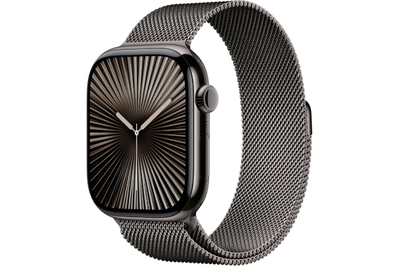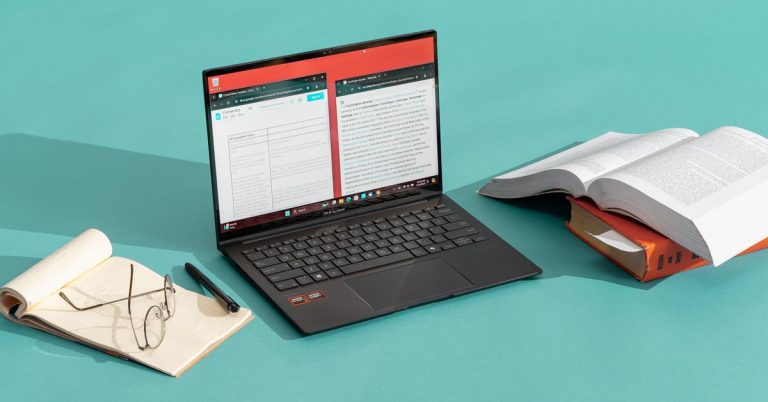The Apple Watch Is the Best Smartwatch for iPhone Owners

The Apple Watch Series 10 is the best smartwatch that Apple sells right now. It comes in two sizes, so it’s more versatile than the Apple Watch Ultra 2. It has more features than the Apple Watch SE, too, plus an always-on display, which the cheapest Apple Watch lacks. But despite a slimmer design and larger display than previous models, the Series 10 doesn’t feel like a huge upgrade if you own a Series 7 or 8. If you have a Series 9, you should hang onto it, and if you can find one on sale, it’s still worth buying. If you have an older Apple Watch that can be updated to watchOS 11, those software improvements will more meaningfully change your Apple Watch experience than the Series 10 will.
But if you have a Series 5 or 6, the Series 10 will feel like a dramatic upgrade. With fast performance, a big, bright screen, faster charging, and a slew of health and fitness features, the Apple Watch Series 10 is the best smartwatch for most people. It isn’t exciting, but it is worth buying.

The Series 10 has a giant screen and slimmer profile. The new watch comes in 42 mm and 46 mm case sizes, a slight size increase from the Series 9, but it has a much larger display due to some design tweaks. The front crystal now cascades over the sides of the watch, making it more screen than metal casing. Apple is also using an OLED screen with a wider viewing angle, so the display is more visible when your wrist is down or tilted at an angle. The redesign means an extra line of text is now visible on the watch without decreasing the font size, and the buttons on-screen are larger, which makes them easier to tap. Typing out a text without misspelling words is easier than on previous watches.
The screen is a big upgrade from a Series 4, 5, or 6, which share the same small display in 40 mm and 44 mm case sizes, and it is even a noticeable bump up from the Series 7, 8, and 9, which were available in 41 mm and 45 mm. The 46 mm Series 10 has 3% more active screen area than even the gigantic Apple Watch Ultra 2 while being 3 mm smaller overall. (This makes the Ultra 2, our upgrade pick, slightly less compelling, but the bigger watch’s impressive battery life remains a selling point.)
Apple redesigned the back of the Series 10 to bake the cellular antenna directly into the metal, making the watch noticeably thinner. The overall result feels sleeker and lighter on the wrist than previous models, even though the Series 10 is larger, wider, and has thicker bezels than the Series 9.
Sleep apnea detection could be life-changing, but it’s too early to tell. The Series 10 uses its built-in accelerometer to detect breathing disturbances if you wear the watch to track your sleep for at least 10 nights in a 30-day period. If you experience an elevated number of breathing disturbances on half of those nights, the Apple Watch will alert you to potential moderate or severe sleep apnea. You can export your sleep data in the Health app on your iPhone to show a physician and discuss an official diagnosis and treatment.
The feature, which has been cleared by the US Food and Drug Administration to accurately detect sleep apnea, could meaningfully affect an Apple Watch user’s life by alerting them to a potentially serious health condition (similar to the watch’s atrial fibrillation alerts). According to the American Medical Association, about 30 million adults in the US have sleep apnea, a condition that causes a person to stop breathing while they sleep, but only 6 million have been diagnosed. Symptoms include snoring, tiredness while awake, and mood swings from lack of sleep. And if left untreated, the condition can lead to a cascade of serious health issues, including type 2 diabetes and high blood pressure.

I’ve been wearing the Series 10 to track my sleep for the last week and have experienced no breathing disturbances, which is reassuring. But Wirecutter’s sleep experts plan to do in-depth research and testing of the new feature and compare it to other sleep-tracking wearables (some of which also offer sleep apnea detection), and we’ll update this guide with their findings.
It’s important to note that the breathing disturbances report isn’t designed for people who have already been diagnosed with sleep apnea. Also, Apple is releasing sleep apnea detection as a feature for the Apple Watch Series 9 and Apple Watch Ultra 2, too, so you don’t necessarily need to buy Series 10 to use it.
The battery life remains unchanged, but charging is much faster. Apple has been promising all-day battery life since the first Apple Watch, and the same is true of the Series 10. In real-world use, we found it lasted closer to 36 hours, even when tracking workouts and sleep.

But the Series 10 did get a meaningful fast-charging upgrade. An 8-minute charge boosted a dead watch to 21%, which was enough to track a night of sleep, and a 15-minute charge took the Series 10 from 0% to 35%. I was able to squeeze out another 14 hours of battery life after that charge, including tracking sleep and a 40-minute cardio and strength workout. The watch takes about 50 minutes to juice up fully. This has made a huge difference for me, a person who has developed chaotic charging habits now that I work from home all the time. I’ll plop a watch (or my phone) on a charger for a few minutes, intending to charge it fully, before realizing I need to unplug it for some reason or another. (But charging a device to 100% every day is bad for its battery anyway.)
You can jam out to music straight from the Apple Watch’s speaker. The Series 10 is the only Apple Watch that lets you play songs or podcasts out loud without connecting a pair of Bluetooth headphones. This is useful in very specific scenarios, like when you’re all alone, your phone is out of reach, and you want to listen to a podcast clip or a new song without grabbing your earbuds. And the sound quality is decent: Listening to the latest Sabrina Carpenter single on my wrist wasn’t as good as listening on my phone with a pair of good headphones, but it got the job done. It was weird that Apple restricted the speaker support on older Apple Watches to FaceTime Audio calls, so this move means you no longer have to think about what you can and can’t play on your watch.
It’s plenty powerful. With Apple’s latest S10 system-on-chip, the Series 10 is responsive and exhibits little to no lag, even when you’re asking Siri (everyone’s voice-activated nemesis) to handle tasks. Siri handles many requests on-device, removing the time it takes to send a query to the cloud. In our tests, commands for tasks such as sending a text, playing a song on Apple Music, delivering the weather forecast, or adding a reminder were processed instantaneously. Siri on the watch still has moments when it gets confused, especially if you have multiple Apple devices in your home, and the HomePod a room away, for example, answers you instead of the watch. Siri also sometimes responded with a random web result instead of an actual answer to a question in our tests, but I’ve come to accept that as one of the voice assistant’s many, many quirks. All that is to say that the Series 10 is fast.
It has all the health, fitness, and emergency safety features you could want. In addition to sleep apnea detection, the Series 10 has two temperature sensors for more granular menstrual tracking and electrocardiogram (ECG) hardware for detecting irregular heart rhythms. It can detect falls and car crashes, too, and an emergency SOS feature allows you to call for help if you’re in a crisis. It isn’t quite as advanced in fitness tracking as the Ultra 2—you can’t use it as a diving computer, for instance—but it also costs a lot less than that model.
The watchOS 11 software upgrade that comes preinstalled on the Series 10 brings useful new features (and older Apple Watches also benefit from installing the update). You can now translate languages by using voice dictation on your wrist using the new Apple Watch Translate app, and the update also includes a slew of useful health and fitness features. Some of my favorites include the ability to pause your activity rings for a day, so you don’t feel pressure to work out when you’re sick, plus a new training load metric that lets you see how much effort you’re exerting during exercise and adjust your workout plan accordingly. A new Vitals app takes your measurements, including respiratory rate, resting heart rate, and wrist temperature, while you sleep, and it gives you a daily report of how those vitals compare to your personal baseline. The reports could signal if something is wrong.
Flaws but not dealbreakers

The size creep is real. The biggest Apple Watch was once 42 mm, and the smallest 38 mm. The Series 10 comes in 42 mm and 46 mm case sizes, which feel and look larger than the 41 mm and 45 mm Series 9. And those on the petite end of the spectrum may find that the slow size increase over the years makes the smaller Apple Watch a little too big for us.
Blood oxygen measurements are no longer available. The Series 10 has a blood oxygen sensor baked into its hardware, but due to a legal tussle, Apple has pulled the Blood Oxygen watch app from Apple Watches it sells. If you bought an Apple Watch prior to late December 2023, you still have access to the blood oxygen measurements, so if that’s an important feature for you, you might want to reconsider upgrading to a Series 10.
Few people need cellular. For $100 extra up front plus an additional monthly fee for a data plan, you can use your watch completely independently of your phone. But in tests, we’ve found cellular connectivity to be rarely necessary and prone to eating up the watch’s battery life. And most Wirecutter staffers who signed up for a data plan on their Apple Watch—which costs an extra $5 to $10 a month on the major carriers and isn’t available on others—have since canceled it.







